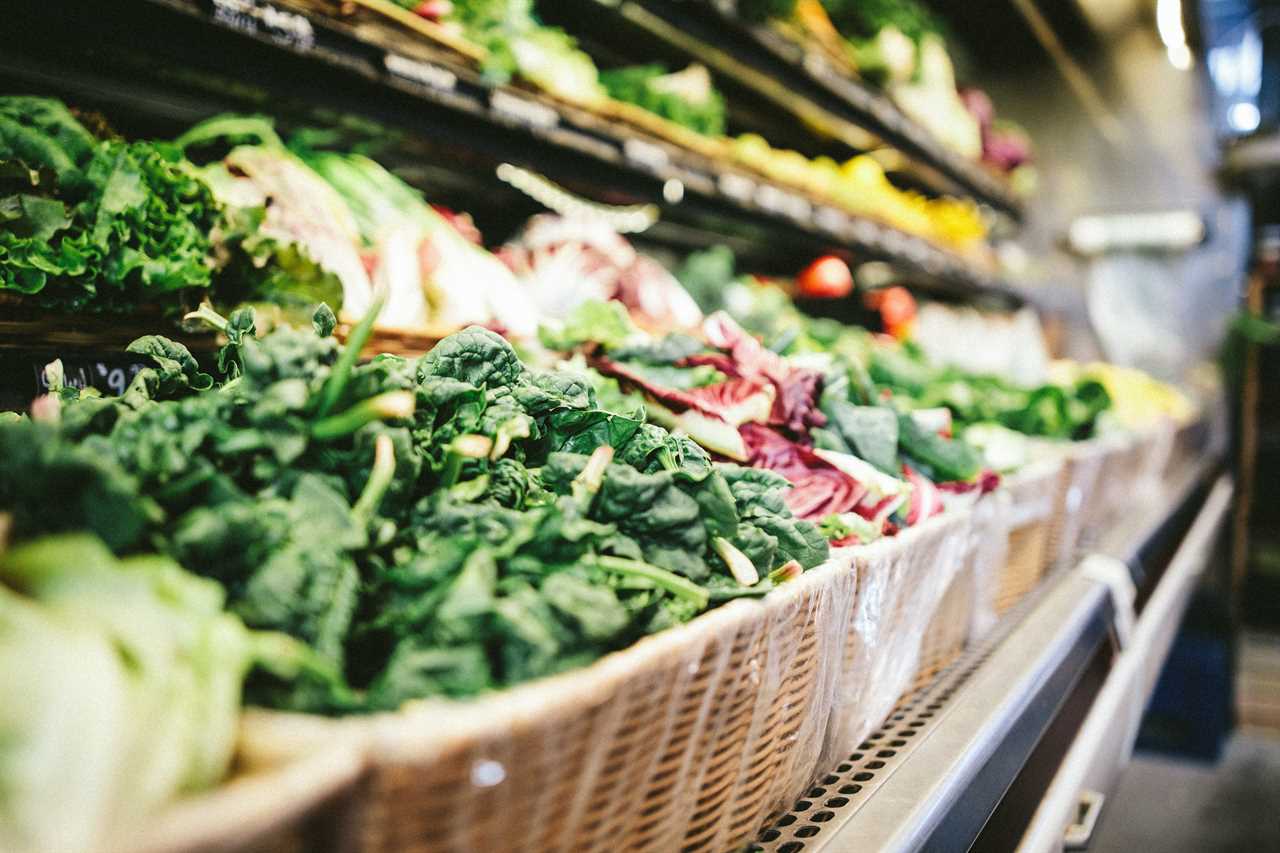You asked, we listened. Follower question of the week.

Q: I’ve heard you refer to vegetables as a “free food,” what does this mean?
A: A “free food” on F-Factor means exactly what it sounds like; you can eat AS MUCH AS YOU’D LIKE. Exciting? Yes! But this by no mean grants you carte blanche to eat unlimited tempura-fried carrots and maple bacon Brussels if trying to lose or maintain your weight. Before you go shoveling platefuls of french fries into your mouth, there are some stipulations and disambiguations to cover. We explain below:
TELL ME MORE
Non-starchy vegetables are a “free food” on F-Factor. This means two things: (1) you can eat as much of them as you’d like and (2) they are considered a carbohydrate-free food, and therefore do not contribute carbohydrates to your total carb intake (which determines your daily net carb total). While non-starchy vegetables do naturally contain some carbohydrates, they’re counted as 0g carbs on F-Factor, because they’re high in fiber, nutritious and rather low in carbs.
DISAMBIGUATION
While all “free foods” on F-Factor have 0g of carbs, not all foods that we count as 0g of carbs on F-Factor are free foods in the way non-starchy vegetables are. Protein, for example, does not contain carbohydrates, but you cannot have unlimited amounts of these foods like you can with non-starchy vegetables. Eat too much chicken and shedding those last few pounds might not be so easy.
BUT WHY? HOW?
Simply put, the incidence of obesity in this country isn’t due to people eating too much kale and the reason so many people are overweight is not because they are sitting around eating too many carrot sticks, lettuce leaves or grape tomatoes. Rather, it is often a lack of vegetables in the diet that leads people to fill up on calorically dense foods in the first place—and then struggle to maintain their weight.

Vegetables are good for you, and you should be eating them. Vegetables are relatively low in calories (non-starchy ones contain just 25 calories per cup), have a high-water content, contain fiber, and are filled with antioxidants, vitamins and minerals. They’re not only great for weight management, but overall health and wellness.
Working in private practice, we have found that when patients began adding more vegetables to their diets, they felt fuller on fewer calories, enabling them to lose weight without feeling hungry. And people are are more likely to fill up on vegetables when they think of them as a free food… so there you have it, they’re a free-food on F-Factor.
SO YOU’RE SAYING I CAN EAT AS MUCH AS I WANT AND STILL LOSE WEIGHT?
Yes, if following F-Factor correctly, people can eat unlimited vegetables and still maintain or lose —so long as they are non-starchy vegetables that are raw, plain or steamed with no oil (as opposed to being prepared with butter, oil or sauce).
WAIT, IT SOUNDS LIKE THERE ARE STIPULATIONS…
Well, of course there are! As noted above, this only holds true when vegetables are raw, plain or steamed with no oil (as opposed to being prepared with butter, oil or sauce), and vegetables are non-starchy vegetables. Oil alone is 135 calories per tablespoon—it doesn’t take a mathematician to see what a measly spoonful of oil can do to a perfectly healthy 25-calorie cup of broccoli.
This also only works if you’re following F-Factor correctly. If you’re not following proper portion sizes for proteins, exceeding well over 33 grams of fat per day, and of course not staying under your daily net carb allotment (while meeting your daily fiber goal), you could eat all the cucumber slices in the world and we wouldn’t be able to guarantee weight management. However, if following F-Factor perfectly, and you’re eating plain non-starchy vegetables you can have unlimited amounts and still lose/ maintain your weight.
When dining out follow this motto: if veggies are sautéed or in sauce, eat half, but if plain and steamed, have as much as you’d like.
SO WHICH VEGETABLES DOES THIS MEAN?
We’re talking non-starchy vegetables. Non-starchy vegetables contain 5 grams of carbohydrate (count as zero carbohydrate on F-Factor), 2 grams of protein, 0 grams of fat, and 25 calories for 1 cup raw, or a 1/2 cup cooked. Starchy vegetables, which are NOT free foods are vegetables like beans, corn, peas, plantains, potato, squash, and sweet potato. Starchier vegetables contain more carbs than non-starchy vegetables, and thus are counted as carbs on F-Factor.
NON-STARCHY VEGETABLES
- Amaranth leaves (Chinese spinach)
- Artichokes
- Asparagus
- Baby corn
- Bamboo shoots
- Bean sprouts (alfalfa, mug, soybean)
- Beets
- Broccoli
- Brussels sprouts
Cabbage (green, red, bok choy, Chinese)
Carrots
Cauliflower
Celery
Chayote
Cucumber
Daikon
Eggplant
Fennel
Greens (collard, dandelion, mustard, turnip)
Hearts of palm
Jicama
Kale
Kohlrabi
Leeks
Mushrooms
Okra
Onions
Pea pods
Peppers
Radishes
Salad greens
Scallions
Spinach
Tomato
Turnips
Water chestnuts
Zucchini HOW DO I JOURNAL THESE VEGETABLES?
When you document the non-starchy vegetables you eat in your journal, allot them zero for grams of carbohydrate, and the amount of fiber that the portion of that vegetable contains. Although vegetables contain some carbohydrate, on the F-Factor Diet they are considered a carbohydrate-free food. But do give yourself the benefit of the fiber they contain. For example, 3 oz baby carrots would be journaled as 0g carb, 2g fiber, and 1 cup of hearts of palm would be journaled as 0g carb, 5g fiber.
The post Living On F-Factor: Vegetables, The Free Food appeared first on F-Factor.
---------------------------
By: Jessica Rossman
Title: Living On F-Factor: Vegetables, The Free Food
Sourced From: www.ffactor.com/living-ffactor-vegetables-free-food/
Published Date: Wed, 12 Oct 2022 18:39:14 +0000
Read More
Did you miss our previous article...
https://prohealthsciences.com/fitness-and-exercise/the-famous-easy-home-workout-tone-up-at-home
 General Health and WellnessFitness and ExerciseSupplements and VitaminsPandemic NewsVideosPrivacy PolicyTerms And Conditions
General Health and WellnessFitness and ExerciseSupplements and VitaminsPandemic NewsVideosPrivacy PolicyTerms And Conditions
